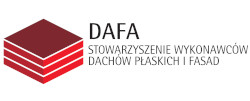Open Access (Artykuł w pliku PDF)
Passive fire protections of cast iron columns
dr inż. Piotr Turkowski, Instytut Techniki Budowlanej
ORCID: 0000-0002-0020-0091
Adres do korespondencji: Ten adres pocztowy jest chroniony przed spamowaniem. Aby go zobaczyć, konieczne jest włączenie w przeglądarce obsługi JavaScript.
DOI: 10.15199/33.2022.07.04
Oryginalny artykuł naukowy
Streszczenie. W artykule zaprezentowano wyniki badania odporności ogniowej obciążonego słupa żeliwnego o przekroju okrągłym zamkniętym (CHS), zabezpieczonego zaprawą ogniochonną. Ponadto badaniu poddano słupy nieobciążone zabezpieczone tą samą zaprawą w celu określenia wpływu obciążenia na skuteczność ogniochronną materiału oraz dwa kolejne słupy nieobciążone, zabezpieczone inną zaprawą ogniochronną. Uzyskane wyniki pokazują, że słupy żeliwne mogą być zabezpieczane ogniochronnie nie tylko reaktywnymi, ale także biernymi materiałami ogniochronnymi. Wymagana grubość izolacji może być ustalana na podstawie tablic uzyskanych w badaniach elementów stalowych, zgodnie z EN 13381. Metody określenia temperatury krytycznej stali, podane m.in. w normie EN 1993-1-2, mogą być z powodzeniem stosowane także w odniesieniu do konstrukcji żeliwnych.
Słowa kluczowe: słupy żeliwne; odporność ogniowa; zabezpieczenie ogniochronne; zaprawa natryskowa.
Abstract. This study presents the results of fire resistance tests of a loaded cast iron column with circular hollow sections (CHS), protected against fire with fire protection mortar. In addition, unloaded columns, protected with the same mortar, were tested in order to determine the relationship between the load and fire protection efficiency.Also, twomore unloaded columnswere added, whichwere protectedwith a different type of fire protectionmortar. The results obtained indicate that cast iron columnsmay be protected not onlywith reactive, but alsowith passive fire protectionmaterials. The required fire protection thickness may be determined based on tables from tests of steel elements pursuant to the EN 13381 European Standard System. The existing methods for the determination of the critical temperature of steel, provided i.a. in EN 1993-1-2, may also be successfully used for cast iron structures.
Keywords: cast iron columns; fire resistance; fire protection; sprayed mortar.
Literatura
[1]Maraveas C,WangYC, SwailesT, SotiriadisG. An experimental investigation ofmechanical properties of structural cast iron at elevated temperatures and after cooling down, Fire Saf. J. 71 (2015) 340–352. https://doi. org/10.1016/j. firesaf. 2014.11.026.
[2] Maraveas C, Wang YC, Swailes T. Elevated temperature behaviour and fire resistance of cast iron columns, Fire Saf. J. 82 (2016) 37–48. https://doi.org/10.1016/j.firesaf. 2016.03.004.
[3] Franssen JM, Kodur V, Zaharia R. Designing Steel Structures for Fire Safety, CRC Press, 2009. https://doi. org/10.1201/9780203875490.
[4] Wald F, DagefaM. Fire resistance of cast iron columns. J. Struct. Fire Eng. 2013; 4: 95 – 102. https://doi.org/10.1260/2040-2317.4.2.95.
[5] Wald F, Dagefa M. Fire resistance of cast iron columns, in: Appl. Strctural Fire Eng. 2011: 443 – 448. https://doi.org/10.1260/2040- 2317.4.2.95.
[6] CEN, EN 13381-4:2013. Testmethods for determining the contribution to the fire resistance of structural members. Applied passive protection products to steel members, (2013).
[7] CEN, EN 13381-8:2013. Testmethods for determining the contribution to the fire resistance of structural members. Applied reactive protection to steel members, (2013).
[8] CEN, EN 1993-1-1:2005+A1: 2014. Eurocode 3. Design of steel structures. General rules and rules for buildings, (2014).
[9] CEN, EN 1993-1-2:2005. Eurocode 3. Design of steel structures. General rules, (2005).
[10] Porter A, Wood C, Fidler J, McCaig I. The behavior of structural cast iron in fire, in: English Herit. Res. Trans. 1998; 1: 11 – 20.
[11] Łukomski M, Turkowski P, Roszkowski P, Papis B. Fire Resistance of Unprotected Steel Beams- Comparison between Fire Tests and Calculation Models, Procedia Eng. 2017; https://doi. org/10.1016/j.proeng. 2017.02.078.
[12] Czapliński K. Obliczanie dawnych konstrukcji z żeliwa i stali, Wiadomości Konserw. 2009; 26: 559 – 564.
[13] Rondal J, Rasmussen KJ. On the Strength of Cast Iron Columns (Research Report No R829), Sydney, 2003.
[14] EOTA, EAD 350402-00-1106. Fire protective products. Reactive coatings for fire protection of steel elements, (2017).
[15] de Silva D, BilottaA, Nigro E.Approach for modelling thermal properties of intumescent coating applied on steel members, Fire Saf. J. 2020; 116: 103200. https://doi.org/10.1016/j.firesaf. 2020.103200.
[16] Anderson CE, Dziuk J, Mallow WA, Buckmaster J. Intumescent reactionmechanisms, 1985. https://doi.org/10.1177/073490418500300303.
[17] Lucherini A, Costa RI, Giuliani L, Jomaas G. Experimental Study of the Behavior of Steel Structures Protected by Different Intumescent Coatings and Exposed to Various Fire Scenarios, in: Struct. Fire 2016. Proc. 9th Int. Conf. Struct. Fire, DEStech Publications, Inc., 2016: pp. 1065–1072.
[18] Lucherini A, Giuliani L, Jomaas G. Experimental study of the performance of intumescent coatings exposed to standard and non-standard fire conditions, Fire Saf. J. 2018; 95: 42–50. https://doi.org/10.1016/j.firesaf. 2017.10.004.
[19] LucheriniA, Torero JL, Maluk C. Effects of substrate thermal conditions on the swelling of thin intumescent coatings, FireMater. 2020: 1–14, https://doi.org/10.1002/fam.2840.
[20] Bailey C. Indicative fire tests to investigate the behaviour of cellular beams protected with intumescent coatings, Fire Saf. J. 2004; 39: 689 – 709. https://doi.org/10.1016/j.firesaf. 2004.06.007.
[21] CEN, EN 1363-1:2020. Fire resistance tests. General requirements, (2020).
[22] Dumont F, Boström L, Łukomski M, van den Berg G. Summary report of the EGOLF round- robin Nr TC2 14-1 in fire resistance testing, 2015.
Przyjęto do druku: 20.06.2022 r.
Materiały Budowlane 07/2022, strona 17-21 (spis treści >>)





























